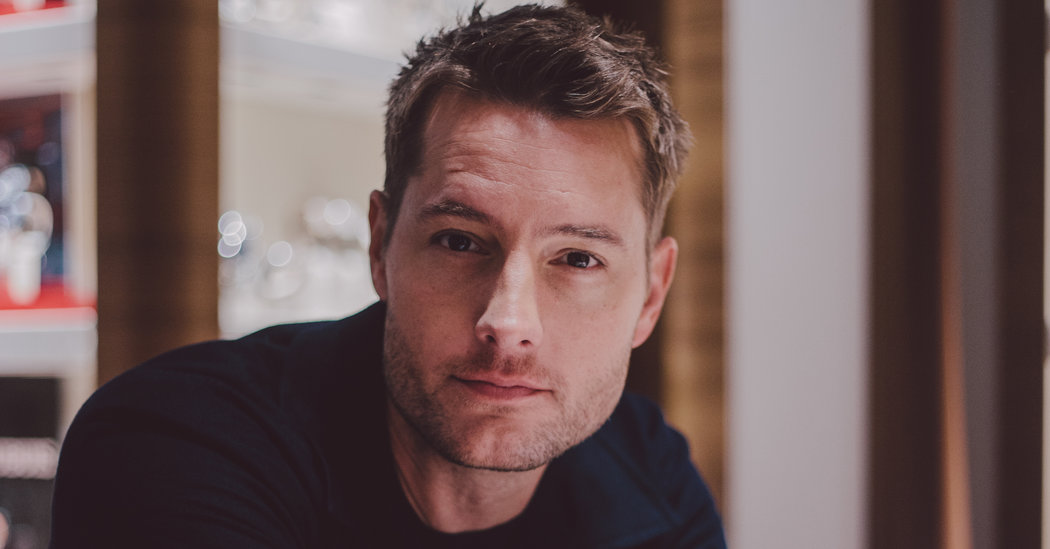
“See that hand?” said Justin Hartley, pointing to the second hand on his Rolex Daytona as it skimmed the black-and-champagne face. “That hand is going so slow. And it never speeds up.”
On a sun-dazzled morning in late September, Mr. Hartley, 42, a star of the prime-time weepie “This Is Us,” was at Wempe Jewelers, a Fifth Avenue watch emporium that gleamed like the inside of an oyster shell.
He was practicing a very expensive form of meditation. A luxury watch can help him re-center, he said. “They hypnotize you,” he said. “And you calm down.”
A watch, he added, also tells a story. “It’s on your skin, it’s very personal,” he said. “It sounds silly, but they kind of walk through your life with you.”
On “This Is Us,” Mr. Hartley plays Kevin, a television actor with stunted emotional growth and addiction issues. He and the character have similar jobs, but little else binds them.
Mr. Hartley lives in Encino, Calif., with his wife, Chrishell Stause, who is an actress and real estate agent, and his daughter from a former marriage, Isabella. He prefers what he called a “boring” life. “I don’t like anxiety,” he said. “I don’t like drama.”
Kevin, on the other hand, is governed by impulse and invites catastrophe. Maybe Kevin needs a nice watch.
At Wempe, Mr. Hartley was greeted warmly, with mild fawning by Michael Guzman, a dapper salesman in a tailored suit, who praised Mr. Hartley’s refined taste. “I’ve never sold you anything crazy big, humongous,” Mr. Guzman said. “You’re like 6-4, with ape wrists. But no.”
Mr. Hartley, dressed in green corduroy trousers and a navy pea coat, a twig of coral pinned to the lapel, declined the offer of water, coffee, chocolate truffles. He had slept about three hours over the last couple of nights (blame Emmys parties and a red-eye flight), but still he looked hale, bronzed, a golden boy even into his 40s. He smelled like an autumn forest.
Mr. Guzman had texted him about a limited-edition watch from Tudor, a Black Bay Chrono Dark, created in honor of New Zealand’s national rugby team, the All Blacks. Only 1,181 had been manufactured, matching the number of players who have represented the team since 1884.
Fifteen watches had been earmarked — wrist-marked? — for the East Coast. Wempe had snagged one of them.
“We’re passing it over to Justin,” Mr. Guzman said as he sheathed his hand in a cotton glove and opened the watch’s case, revealing its matte black band and its black-on-black face. “The gentleman that put it together in Switzerland to Justin’s hands, nobody in between, untouched,” he said ceremonially.
Mr. Hartley unsnapped the elastomer bracelet on his Rolex Daytona and slipped the Tudor on, revolving his wrist back and forth.
He bought his first serious watch about a decade ago, during his stint on the superhero drama “Smallville,” in which he played Oliver Queen, a billionaire chief executive who moonlighted as an avenging archer.
Queen wore a humble Timex. But on a trip to Las Vegas, Mr. Hartley picked up a TAG Heuer Carrera and quickly became a watch convert.
He now buys watches as gifts, like a pink Cartier for his wife and another Cartier, with diamonds, for his mother, which she wears opposite her Apple watch. He bought his father a Rolex from 1948, his father’s birth year, and for his brother, who recently received his pilot’s license, a Rolex Air King.
Mr. Hartley buys them for himself too. He doesn’t like to say how many. Others he receives as gifts, like the Omega De Ville he wore to the Emmys.
He liked the Tudor, he said, but it reminded him of the all-black Tudor watch he already owned. The new Tudor told the same story. It cost $5,925, which Mr. Guzman said was an investment, as it would almost certainly increase in value. Mr. Hartley seemed unpersuaded.
“People sometimes buy watches because they’re like, ‘Oh, it’s a good investment,’” he said. But tastes change and styles change. “I just don’t think that’s the sound financial move.”
Does he ever make an impulse buy? “Not here,” he said.
Unclasping the Tudor, he darted his eyes to the Rolex wing at the right of the store. “Anything amazing over there?” he asked.
“A few pieces you might like,” Mr. Guzman said, pointing at a flashy Rolex Submariner with a cobalt face. “Vegas much?” Mr. Hartley said.
Mr. Guzman emphasized its practicalities. “You can keep track of multiple time zones,” he said. But it reminded Mr. Hartley of a failed pilot for an “Aquaman” TV series, a story he didn’t want to relive.
So Mr. Guzman steered him toward a Rolex Day-Date with a milk chocolate face and a rose gold bracelet, explaining that men often bought it to celebrate a crowning life event: selling a company, making partner, snagging a dream job.
Mr. Hartley gazed at it, rapt. What story did that one tell? “Just … wanting,” he said. It cost $37,650. “I’m going to wait on that one,” he said.
He went back to the main room and tried on a blue Glasshütte with a ’70s vibe. “It’s cool, right?” he said, before he took off the watch and admired the workings in the back. “That’s just really pretty.” That one cost $13,900.
“That’s like a car,” Mr. Hartley said. “And what if you wreck that car? What if you fall down?”
Mr. Guzman assured him that Wempe would cover all repairs. It seemed like a good deal, but Mr. Hartley politely declined.
“I think I’m all set for today,” he said, gently replacing the Rolex Daytona around his ape wrist. The other watches, they weren’t him. He and the Rolex walked through the door and back to his hotel. It was time to take a nap.







